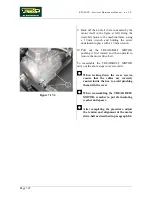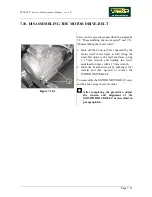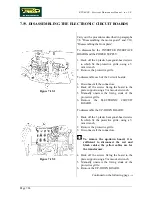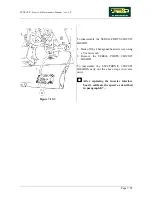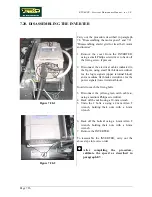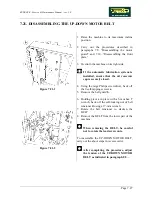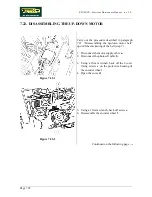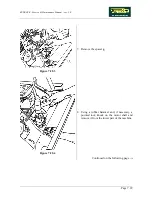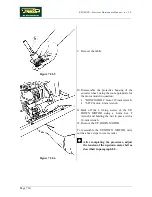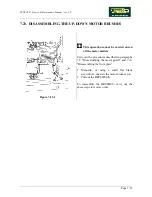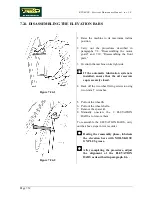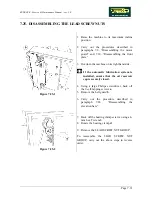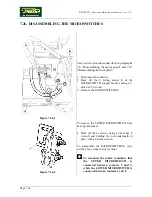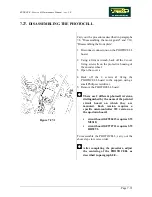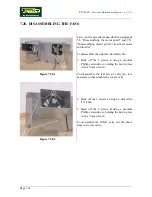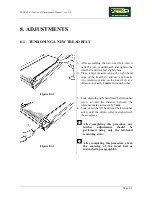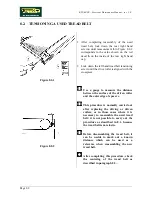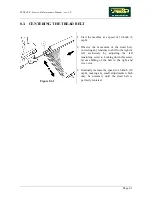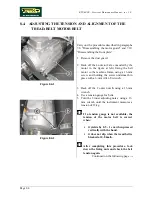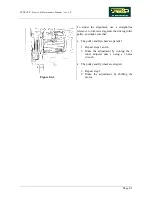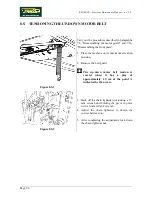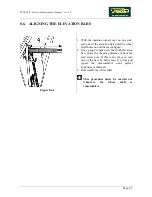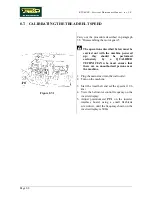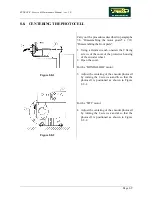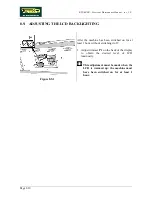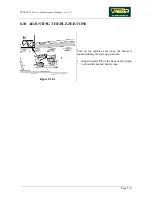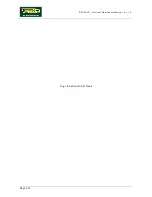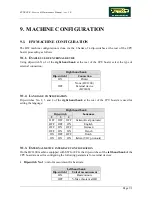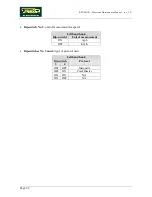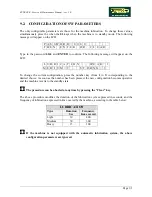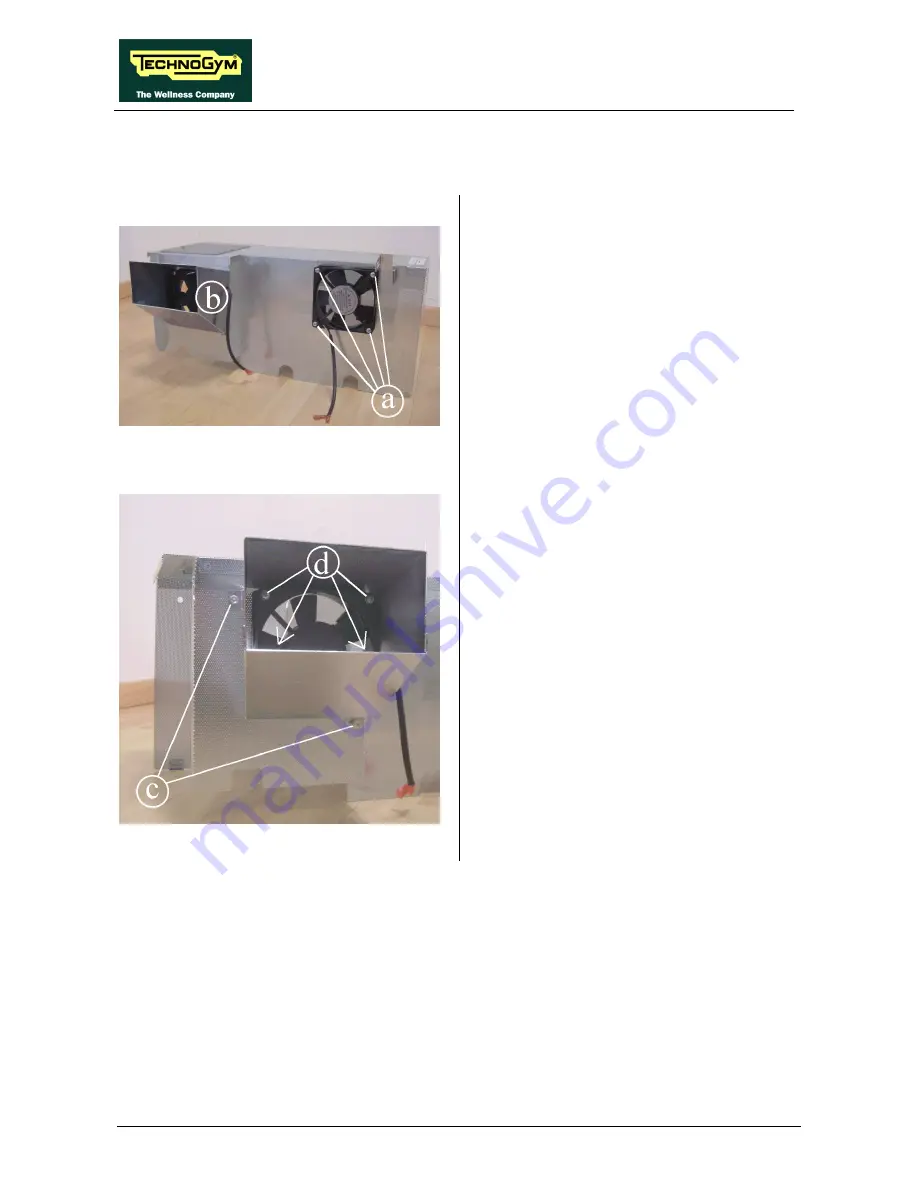
RUNRACE : Service & Maintenance Manual - rev. 2.0
Page 7.36
7.28. DISASSEMBLING THE FANS
Figure 7.28-1
Carry out the procedures described in paragraphs
7.8. “Disassembling the motor guard” and 7.11.
“Disassembling shield grid for tread belt motor
and inverter”.
To disassemble the right fan, downflow fan:
1. Back off the 4 screws
a
using a medium
Phillips screwdriver, holding the nut in place
with a 7-mm wrench.
To disassemble the left fan, air entry fan, it is
necessary to disassemble the conveyor
b
:
Figure 7.28-2
2. Back off the 2 screws
c
using a 4-mm Allen
T wrench.
3. Back off the 4 screws
d
using a medium
Phillips screwdriver, holding the nut in place
with a 7-mm wrench
To reassemble the FANS, carry out the above
steps in reverse order.
Summary of Contents for Runrace
Page 1: ...SERVICE MAINTENANCE MANUAL REV 2 0 ...
Page 2: ......
Page 4: ......
Page 28: ...RUNRACE Service Maintenance Manual rev 2 0 Page 2 18 Page intentionally left blank ...
Page 144: ...RUNRACE Service Maintenance Manual rev 2 0 Page 8 12 Page intentionally left blank ...
Page 160: ...RUNRACE Service Maintenance Manual rev 2 0 Page 9 16 Page intentionally left blank ...
Page 182: ...RUNRACE Service Maintenance Manual rev 2 0 Page 11 16 Page intentionally left blank ...
Page 183: ......

